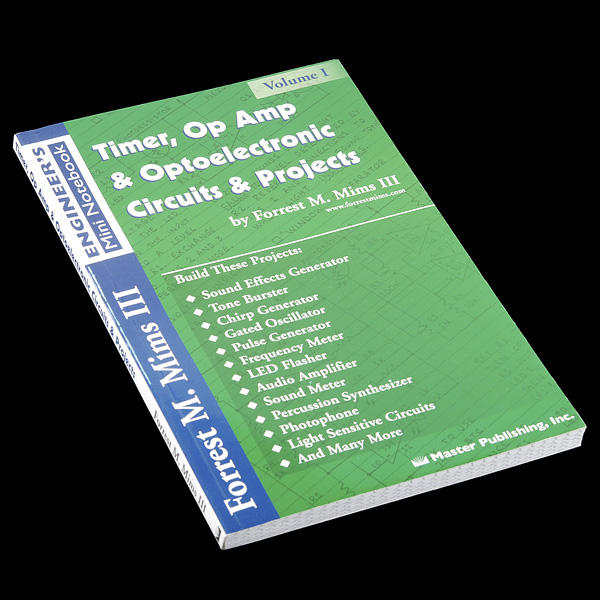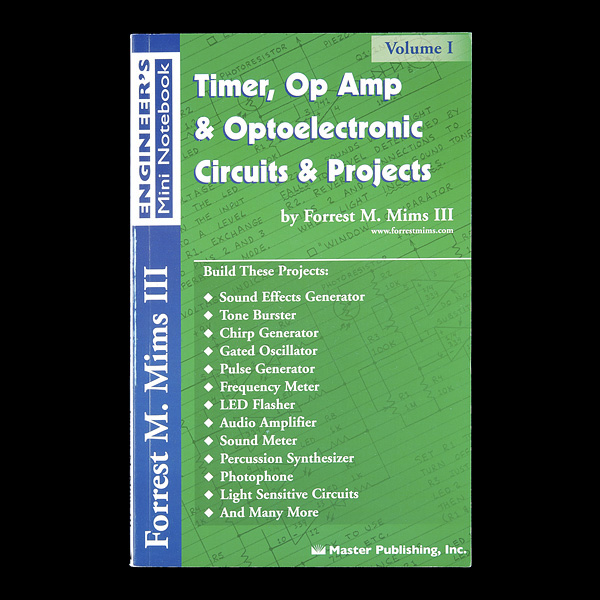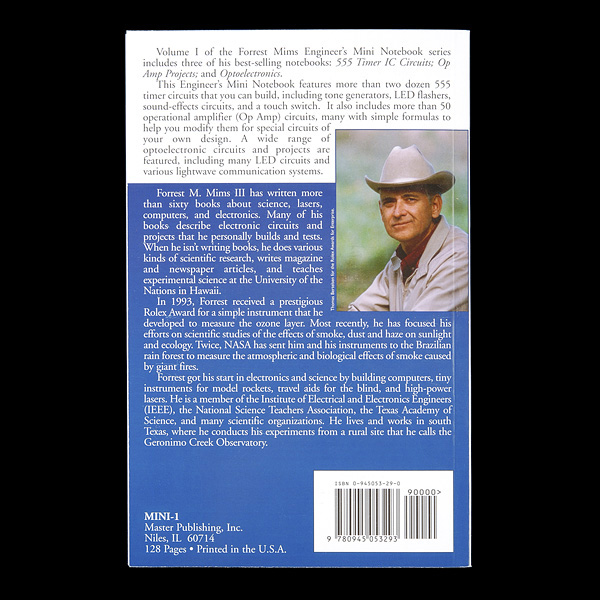Timer, OpAmp & Optoelectronic Circuits & Projects
Forrest M. Mims III has written more than sixty books about science, lasers, computers, and electronics. In 1993, He received a prestigious Rolex Award for a simple instrument that he developed to measure the ozone layer. He is a member of the Institute of Electrical and Electronics Engineers (IEEE), the National Science Teachers Association, the Texas Academy of Science and many scientific organizations. When this guy put together a set of electronics reference books, we were excited to get them. The Engineer's Mini Notebook series is a set of four handbooks that lay out, in plain language, the foundation of electrical and electronic knowledge. Our engineer's here at SparkFun cited several things in these books that they remembered learning in school, stuff that turned out being really useful.
Timer, OpAmp & Optoelectronic Circuits & Projects features more than two dozen 555 timer circuits that you can build, including tone generators, LED flashers, sound-effects circuits, and a touch switch. It also includes more than 50 operation amplifier (Op Amp) circuits, many with simple formulas to help you modify them for special circuits of your own design. A wide range of optoelectronic circuits and projects are featured, including many LED circuits and various lightwave communication systems.
Info:
- Author: Forrest M. Mims III
- Publisher: Master Publishing, Inc.
- Paperback: 128 pages
- ISBN-10: 0945053290
- ISBN-13: 978-0945053293
Timer, OpAmp & Optoelectronic Circuits & Projects Product Help and Resources
Core Skill: Electrical Prototyping
If it requires power, you need to know how much, what all the pins do, and how to hook it up. You may need to reference datasheets, schematics, and know the ins and outs of electronics.
Skill Level: Noob - You don't need to reference a datasheet, but you will need to know basic power requirements.
See all skill levels
Comments
Looking for answers to technical questions?
We welcome your comments and suggestions below. However, if you are looking for solutions to technical questions please see our Technical Assistance page.
Customer Reviews
No reviews yet.





Of the series, I would have to suggest you get this one. It is by far the most useful and practical. It also makes a great accompaniment to the "Getting Started in Electronics" Mims Book (BOK-10764). And it's the only one I still keep handy. Start with "Getting Started..." then build using "Timer, OpAmp...". You will often find that a circuit you build does not work quite the way other resources suggest. Mims' circuits simply work. He makes it easy for you to modify and combine the many circuits, included in the book, for your own needs. He even provides IC part numbers. I've personally found the LM324 quad op-amp to be most user friendly for use with this book. Half of my Mobot's circuit solutions were found in this book. Happy Hacking!
I found "Getting Started in Electronics" when I was 10. That book started a hobby that turned me into an electrical engineer. 26 years later I still keep a copy in my reference library.
I've been hoping that Forrest will get around to writing a second edition. That old book is still very relevant, but there have been so many advances that I would love to see them in his classic handwritten "engineers notebook" style.
I really love his handwritten style.
Based on your experience level (and background), I also really suggest Electronic Formulas, Symbols and Circuits
Cool book. It really explains op amps and comparator circuits well. I think it's a good buy.
fd
This book is a great buy. I read this several years and it was a great resource for Timer and OpAmp projects. I still reference it every once and awhile today. I really recommend this book over the others in the series.